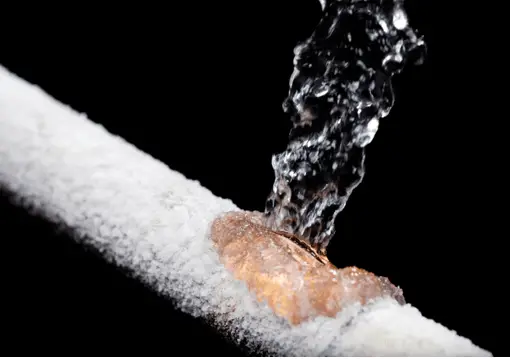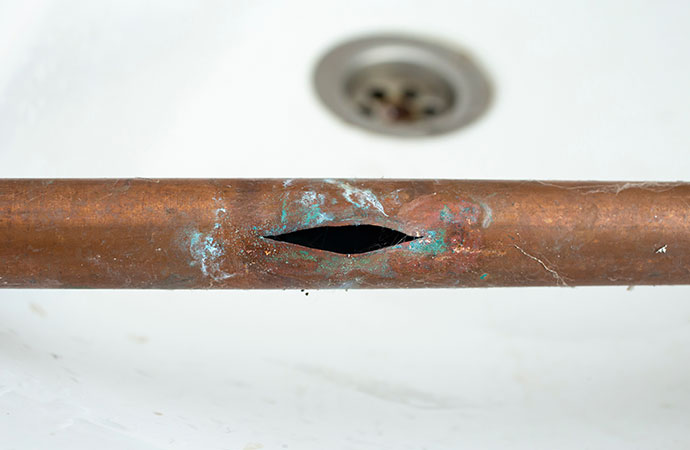Are you on the lookout for help on How to Install and Connect a New Dishwasher?

A ruptured pipeline is a major emergency; you can only stand as you watch water you pay very much to reunite with the earth. In even worse situations, you see a pool on your kitchen area flooring, which is a fantastic journey risk, specifically if you have youngsters around. If the pipe that ruptured was in your wall surfaces, problem: you might need to repaint that whole section.
Exactly how can a calamity like a ruptured pipe be stopped and handled? Well, by paying attention to your professional emergency plumbing technicians and complying with these regulations.
How do I recognize when my pipes have burst?
Changing water stress
Pipes do not just burst in a day. You might have noticed that your kitchen area faucet or shower doesn't run promptly when you turn the faucet. It may stop for a couple of seconds and after that blast you with even more pressure than typical.
In various other circumstances, the water might seem normal initially, after that decrease in stress after a few secs.
Damp wall surfaces and also water stains
Before a pipe bursts, it will certainly leakage, the majority of times. If this consistent dripping goes unnoticed, the leak might finish into a broad wound in your pipe. One very easy means to prevent this emergency is to look out for wet walls ad water spots. These water spots will certainly lead you right to the leak.
Puddles under pipes and sinks
When a pipe bursts, the outflow forms a puddle. It might show up that the pool is growing in size, and no matter how many times you mop the pool, in a couple of mins, there's an additional one waiting to be cleansed. Often, you may not be able to map the pool to any type of visible pipes. This is a sign to call a professional plumber.
Untraceable dripping noises
Pipe bursts can occur in the most unpleasant places, like within concrete, inside walls, or under sinks. When the house goes quiet, you might have the ability to listen to an irritatingly consistent dripping noise. Also after you have actually inspected your shower head and kitchen faucet, the trickling might continue.
Dear reader, the trickling might be coming from a pipe inside your wall surfaces. There isn't much you can do regarding that, other than tell an expert plumber.
Shut down the Water
When water ices up, it broadens in volume by concerning 9 percent. As well as it expands with tremendous force: The pressure inside pipelines may go from 40 pounds per square inch to 40,000 psi! No pipeline can hold that much stress, so it breaks open. The break might take place where the ice types, however more often, it takes place where water pressure finds a weak point in the pipe. That may be inches or perhaps feet from the frozen location. Discover the water shutoff valve as well as turn off the water to stop more damage. You could also require to turn off the electricity too, depending upon where the leaks happens as well as how huge it is.
Contaminated water
Many individuals assume a ruptured pipe is a one-way electrical outlet. Rather the contrary. As water flows out of the hole or wound in your plumbing system, pollutants locate their way in.
Your water might be contaminated from the resource, so if you can, check if your water storage tank has any troubles. However, if your alcohol consumption water is provided as well as detoxified by the city government, you need to call your plumber instantly if you see or scent anything funny in your water.
What do I do when I detect a burst pipeline?
Your water meter will certainly continue to run even while your water wastes. To decrease your losses, find the primary controls and turn the supply off. The water pipe are an above-ground structure beside your residential property.
How to Fix & Detect a Leaking Pipe
How Do I Know if a Pipe is Leaking?
Leak detection tests can help you determine if your pipe has a leak. Even if you don’t see an apparent leak, you should still conduct leak detection tests regularly to save water and money—and prevent major damage to your home.
Water meter. It can be helpful to figure out what your usual water meter usage numbers are and then monitor them regularly. To monitor your meter, first, turn off all water faucets in your home. Check the meter and write down the numbers. In a few hours, check the meter again. If the numbers have changed, you have a leak. Water gauge. Use a water gauge to test your water pressure. Your showerhead should produce a certain amount of water pressure based on its model and design. If the pressure is lower than it is supposed to be for that specific showerhead, your home likely has a leak. Puddles. Look inside your bathroom, laundry, and kitchen sink cabinets. Puddles around the cabinets or around toilets, tubs, showers, and washing machines indicate the presence of a leaking pipe. You may also notice loose tiles, peeling or flaking paint, or mold caused by water accumulation. Napkin test. Even if you don’t see any puddles, you may still have a leak. You can test for water leaks in the bathroom, laundry, and kitchen by wiping below-sink connections with a napkin, paper towel, or piece of toilet paper. If it becomes damp, you probably have a leaking pipe under the sink. Discolored walls. Walls that are discolored—usually with brown or yellow stains—or bulging might mean that they have been impacted by water damage caused by a leaking pipe. Smell. A leaky pipe will create sitting water, and over time, that water may develop a musty smell. If your home smells musty, but you can’t locate the source, it may be due to a leak. Steps for Fixing a Leaking Pipe
A leaky drain can be remedied by tightening the pipe base, replacing the drain seal, caulking the rim, and tightening the pipe nut. Similarly, a leaking toilet pipe can be treated by tightening the packing nut. You may also need to replace the valve. A leaky faucet may just need tightening or replacement of the washers. If that doesn’t work, consider replacing your faucet. If your pipe has a hole in it, you may want to use a pipe leak sealer or pipe leak tape. This quick fix for water pipe leaks can also temporarily fix a copper pipe leak. https://www.ahs.com/home-matters/quick-tips/how-to-tell-if-pipes-are-leaking/

I discovered that article about How to Install and Connect a New Dishwasher when doing a search on the web. If you please set aside a second to promote this blog entry if you appreciated it. Thank you so much for taking the time to read it.
Need it done? Dial!